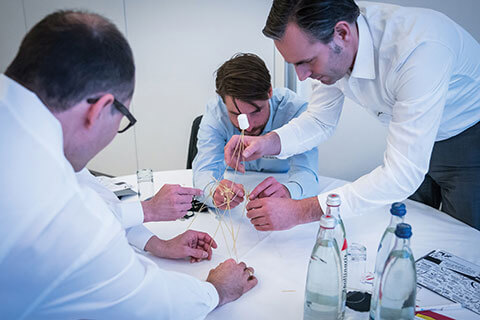
The interactive program at the Association of German Engineers (VDI)Internet of Things conference included virtual-reality games.
The Association of German Engineers (VDI) holds more than 150 conferences, congresses, and conventions every year, including the International Engine Congress, Plastics in Automotive Engineering, and Automated Driving. At any moment year-round, there’s a major VDI event that just happened or one that’s about to take place.
This past December, VDI introduced yet another conference — this one focused on the Internet of Things (IoT) and the Industrial Internet of Things. Held Dec. 13–14 at andel’s by Vienna House hotel in Berlin, the Congress for Exchange of Strategies, Innovations, and Solutions (CESIS) drew nearly 300 people, according to Katharina Neumann, product manager of international business development at VDI. It also introduced to the group an approach to small, lively discussion groups: World Cafés.
The idea came from one of Neumann’s colleagues who had run something similar at another VDI event. Here’s how it worked at CESIS: On the second day of the conference, from 11 a.m. until a 12:30 p.m. lunch break, attendees broke into small groups across the conference and exhibition areas. They chose from one of seven general topics — including data analytics, artificial intelligence, and IoT and the automotive industry — and sat down at a corresponding table. It worked out to about 10 or 15 people per table, plus a moderator. For the next half hour, each group had a spirited conversation about the topic at hand, with the moderator kicking things off and throwing out questions or prods if discussion started to lag.
When the 30 minutes were up, everyone switched to another table and topic of their choice. The moderator summed up the previous group’s discussion, which let the newcomers build and expand on that conversation rather than retreading points that were already made. It meant the second- and third-round groups could go increasingly deep into the subjects — not unlike the extra detail you’ll find in a photograph of a desk that has other photographs propped up on it. Attendees were able to sit at three tables total over the course of the cafés.

The formats at VDI’s Internet of Things conference were designed to bring participants together to ‘achieve some cooperations between different industries.’
“People really liked it,” Neumann said. “At the moment, there is a lot of demand from the audience — our participants — to get really involved in the conference. They not only want to listen to presentations but also to have some more interactive elements.”
The cafés were ideal for both engaging attendees and helping them network. When the third round ended, “they were standing there with 10 to 15 other people, and they could exchange business cards and get into further conversation,” said Katrin Pinkwart, also a product manager of international business development for VDI, who noted that the format helped participants feel like they owned any ideas they came up with. “They get the feeling they can actually take something home because they worked on it themselves.”
The interactive cafés fit into the conference’s larger mission to bring a variety of people together and help them exchange ideas and learn from each other, according to Neumann. Many CESIS attendees are engineers, but some aren’t; some are VDI members, but others aren’t. They came to Berlin from all over — about 15 percent from the United States, 10 percent from Asia, a third from Germany, and the rest from other parts of Europe. The majority work as C-level executives or vice presidents across a range of industries, but others are senior managers and directors. “Our goal was to bring them all together,” Neumann said, “and achieve some cooperations between different industries.”
The VDI team worked with their advisory board — which includes experts, strategists, and innovators from across the industry — to hammer out which topics they’d offer for the cafés. Pinkwart said that pinpointing the right subjects is essential to pulling off a small-discussion format. “You need to make sure people have a choice between different topics, and you have to find topics that are general enough so people can get into a discussion,” she said. “If you find a topic which is too specific, many people at the tables won’t know what to say.. Then the discussion won’t work.”
